Each year, The Graduate School honors graduate students in programs throughout our University for their powerful discoveries that contribute to a better future for people and communities in North Carolina. We’re pleased to present 11 Impact Awards and five Horizon Awards for 2021 — and to share the honorees’ own descriptions of their research projects.

Impact Award
“Intimate partner violence (IPV) is an urgent public health crisis in the United States. Batterer Intervention Programs (BIPs) are groups that seek to address violent behavior by modifying maladaptive beliefs and behaviors. They form the standard treatment for adjudicated IPV offenders, and states across the nation have policies or standards that guide BIP practices.
However, many researchers assert that BIPs are not effective because these practice standards are based on an outdated understanding of IPV instead of the best available scientific evidence. Accordingly, there is a critical need to better understand what is and is not working within batterer intervention and other policies and practices used to reduce IPV. My three-paper dissertation used a mixed-methods approach to better understand how to improve batterer intervention.
The first paper is a policy review, which analyzed the 46 existing state practice standards for BIPs. Findings reveal that such policies are not evidence-informed and must be updated, given their influence over BIPs nationwide. The second paper is a qualitative study of leaders, policymakers, court professionals, program directors and facilitators who create and administer batterer intervention policies in North Carolina. Findings highlight needs and challenges related to state oversight of BIPs, program sustainability and court system processes. For example, there is a dire lack of funding, which makes it difficult for state leaders to provide the most effective oversight of programs.
The third paper is a mixed-methods study including a statewide survey of BIPs and qualitative interviews, which explores how these programs help offenders refrain from violent behavior. Findings, which are being presented to key stakeholders, draw attention to the need to address multiple barriers in order to implement additional evidence-based practices into BIPs.”

Impact Award
“Seagrass meadows are among the most valuable ecosystems on Earth, providing services such as habitat and food for commercially and recreationally harvested species, carbon storage, and sediment stabilization. Unfortunately, degradation and loss of seagrass meadows has accelerated around the globe. Environmental restoration of seagrass has proven challenging and costly, demonstrating a clear need for innovative coastal restoration designs.
I hypothesized that the addition of the native hard-shell clam could enhance seagrass fitness and recovery after a physical disturbance in a North Carolina bed. This is because clams have the potential to interact with seagrass in a manner which benefits both species, including providing nutrients via waste products. I examined the effects of a physical disturbance and hard-shell clam presence in mixed community seagrass beds in Back Sound, N.C. Adding clams to seagrass patches exposed to an experimental physical disturbance similar to a propeller scar enhanced seagrass summer growth rates and autumn shoot densities. In contrast, increasing clam densities in non-disturbed seagrass beds reduced seagrass growth rates and shoot densities.
A year after the experimental treatment, disturbed areas with clam addition had significantly higher recolonization than disturbed areas without clam addition. These results suggest that the occurrence of a physical disturbance may alter the influence of clam presence on seagrass resiliency. My work has provided a better understanding of North Carolina’s seagrass beds and can be used to improve seagrass and coastal resiliency after physical disturbances such as hurricanes and propeller scars.”
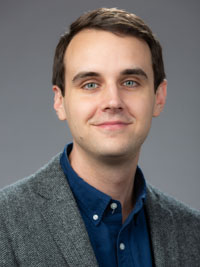
Impact Award
“Successful efforts to reform health care delivery toward better value, prevention and equity require health systems to be more responsive to their patients’ social needs in routine outpatient clinical encounters. These needs include food security, housing stability, employment opportunities, transportation and social support. Current research indicates that these factors drive health outcomes and widen health disparities.
My research is focused on identifying and supporting patients with unmet social needs in diverse primary care settings. This work is relevant to current state policy efforts to improve care across the medical and social care continuum. I partnered with the North Carolina Community Health Center Association, the BlueCross BlueShield of North Carolina Foundation and federally qualified community health centers across North Carolina to offer social needs screening and response as part of a routine medical visit. Specifically, my research sheds light on how predictive analytics can be used with social needs assessment data to identify patients who could benefit the most from having their social needs addressed and the cost of offering social needs screening and response as part of a medical visit.
Through a collaborative discussion, patients who want support with unmet social needs can be referred to financial assistance programs, community-based organizations and social services. I also used qualitative methods to better incorporate patients’ perspectives on how their health care team can partner with them to address both medical and non-medical drivers of health and well-being.
I intend to use these findings to increase implementation of social needs screening protocols and develop tailored interventions that improve health outcomes and equity across North Carolina and beyond.”

Impact Award
“In North Carolina, 2.4 million residents use private wells as their drinking water source. Well water quality is not federally regulated, leaving users vulnerable to metal contamination. This is concerning because metal exposure has been associated with preterm birth. In North Carolina, 10.4% of births are preterm, according to National Center for Health Statistics data. The impacts of this are severe — 35% of all newborn deaths are attributed to preterm birth complications — and persist, with children born preterm having a greater risk of later-life adverse health outcomes.
There are, however, few detailed, systematic documentations of well water-based exposure to metals in the state. To address these gaps, my dissertation research, focused within North Carolina, will identify patterns of metals in well water and examine the association between exposure to mixtures of metals and preterm birth incidence.
So far, I have analyzed data from 75,000 individual well water tests conducted throughout all 100 N.C. counties from 2010 to 2019. My study findings indicate that 2.0%, 2.6% and 25.3% of wells were over the N.C. Department of Environmental Quality’s groundwater standard for arsenic, lead and manganese, respectively, and that many metals were significantly correlated, indicating substantial co-exposures.
As my research continues, I will be combining these data with birth certificate records to evaluate the association with preterm birth. Through collaboration with the UNC Superfund Research Program, I am helping to create an interactive online portal so that all North Carolinians can access information regarding their local well water quality.”

Impact Award
“Many of the 3 million North Carolinians who live in rural areas experience unique barriers to accessing sufficient healthcare services. To understand more about perceptions of health, illness and medical care across the state, my colleagues and I at the Southern Oral History Program at the UNC Center for the Study of the American South collected 175 oral history interviews from a diverse array of individuals.
These interviews — part of the Stories to Save Lives: Health, Illness and Medical Care in the South project — help preserve the history of our state and aim to enhance the ways that North Carolinians receive and experience healthcare services. For example, I led a systematic analysis of oral histories that we collected in western North Carolina. The interviewees’ stories illuminated that the closure of a rural hospital’s labor and delivery unit increased local residents’ mistrust of healthcare systems and the existing services at their nearest hospital. As such, the loss of obstetric services could adversely affect health for many members of this rural Appalachian community, beyond the immediate negative implications for local women and infants.
Our dissemination of these (and other) findings from the Stories to Save Lives project supports the work of local healthcare advocates and medical providers who seek to improve healthcare in rural communities where healthcare services are diminishing.”
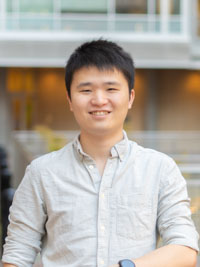
Horizon Award
“Public safety and health are among the most basic needs of a thriving community. The stability and trust of a healthy society are the foundation for a robust economy and a high quality of life. However, recent incidents in police brutality and public health (for example, the COVID-19 pandemic) are threatening the prosperity of North Carolina’s communities. While the major focus has been on policy reform, access to low-cost and effective tools is also part of the equation.
To provide the tools to address the issue of manual operation of body cameras and high-cost human sensing and tracking, I propose using sensor fusion with off-the-shelf sensors, such as accelerometers and Wi-Fi, in my research. For the body camera, the low-power sensor fusion enables reduced power consumption and video file size. These improvements can allow body cameras to be implemented as autonomous ones that are always recording (no information missed) and producing small video files for longer and less expensive archiving.
For indoor human sensing and tracking, the fusion of Wi-Fi and camera is investigated. The ubiquitous Wi-Fi and cameras can be used to scale up effective contact tracing to determine a patient’s close contacts during a public health crisis. Within business applications, these resources provide low-cost, privacy-aware customer analysis to achieve better store layout and customer experience. This would be beneficial to retail stores, especially small-business owners who cannot afford current high-cost solutions.
These tools enable communities to build trust between law enforcement and the public, and they also provide valuable information to policymakers, officials and store owners without sacrificing privacy.”

Impact Award
“Clean drinking water is a vital resource constantly threatened by pollution associated with human activity. For instance, hazardous levels of per- and polyfluoroalkyl substances (PFAS) have recently been detected in the Cape Fear River Watershed, which is the primary source of drinking water for more than 250,000 N.C. residents.
PFAS, a class of molecules with over 4,730 variants, are also known as “forever chemicals” due to their environmental persistence and tendency to bioaccumulate. Though PFAS are practical for the production of chemically resistant household products, serious concerns exist regarding the fate of waterborne PFAS unintentionally discharged from manufacturing facilities. Of specific interest to North Carolinians, a major chemical plant on the Cape Fear River was recently implicated in the discharge of GenX, a next-generation PFAS.
In order to facilitate the rapid detection of GenX contamination at its earliest onset, my colleagues and I are developing deployable electrochemical sensors to remotely monitor waterways. These sensors are covered with polymeric pockets that are perfect fits for the GenX molecule, allowing it to be specifically detected in a complex water matrix. Integrating this concept with electrochemistry allows us to quantify GenX in any given water sample to ensure it falls below the N.C. Department of Health and Human Services regulatory limit.
I am currently collaborating with the U.S. Army Corps Engineer Research and Development Center to mount these sensors on drones for deployable analysis, continuing toward the goal of protecting the purity of drinking water for the people of North Carolina and beyond.”
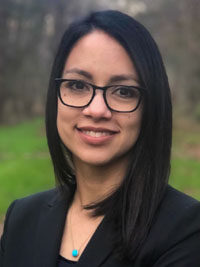
Horizon Award
“Black women suffer a 40% higher breast cancer mortality rate compared to white women, and the underlying causes of this disparity remain uncertain. Multiple clinical studies suggest that targeting the tumor immune microenvironment, the landscape of immune cells within a tumor, has potential to improve outcomes for breast cancer patients by helping these immune cells target and kill cancer cells. However, the number of Black participants represented in clinical trials and retrospective studies has been low to absent, and as a result, key details about the immune microenvironment of breast cancer in Black women are relatively unknown.
Using a sample of 1,952 participants from the Carolina Breast Cancer Study, a study of women with invasive breast cancer from 44 N.C. counties, we characterized the immune microenvironment of breast cancer and evaluated differences across race and breast cancer subtypes. Our data suggest that immune response is intricately related to both race and tumor subtype, with race-specific differences in the distribution of immune cell types within breast tumors.
To our knowledge, this N.C. study represents the largest cohort to evaluate the role of race and the breast cancer immune microenvironment thus far. The results of this work provide critical information to help clinicians close the health disparities gap while highlighting the importance of racial diversity in impactful clinical trial design both in North Carolina and beyond.”
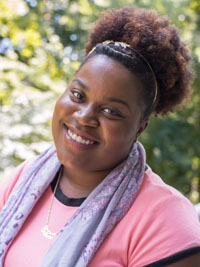
Impact Award
“Disaster management strategies typically focus on the ways in which governmental and non-governmental agencies work to recover and repair physical damages following disaster events. In North Carolina especially, disaster recovery – namely, after hurricanes – is connected to both ecological and sociohistorical factors that relate to racial and ethnic marginalization, power and grassroots action.
Focusing on the aftermath of Hurricanes Matthew (2016) and Florence (2018) in Robeson County, N.C., my research examines the relationship between vulnerability, resilience and adaptation in African-American and Native American (Lumbee) neighborhoods. Using interviews and photography, I document the social aspects of living within African-American and Lumbee communities in Robeson County in the wake of disaster. These neighborhoods are situated in more flood-prone areas, as well as subjected to less financial aid and fewer resources in response to hurricanes; this dual form of ecological and social erosion of local response capacity makes it harder for them to successfully recover.
My research demonstrates that African-American and Lumbee communities note the gap between government assistance and their needs and strategize beyond narratives of vulnerability to provide for themselves and their communities in order to recover from hurricanes. I then examine grassroots action and mobilization as a mode of adapting to changing climates that is under-examined. Grassroots organization following disaster is a key component of these communities’ recovery and resilience strategies. Modeling an approach that emphasizes this creates more comprehensive, sustainable plans for communities of color in North Carolina, and potentially across the United States.”
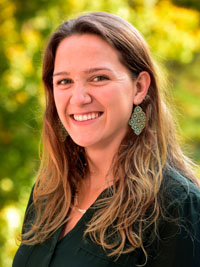
Impact Award
“There is no safe level of exposure to lead. Even low levels of lead exposure are related to cognitive and behavioral problems in children. With lead, prevention is key – once in the body, lead can be stored in bones for decades. Eliminating exposure in children today will improve the health of both those children and their future offspring.
Lead testing in the United States is largely focused on identifying children at risk of high levels of lead exposure; the vast majority of children exposed to lead are not identified using this strategy. In North Carolina, only 50% of children are tested for lead. Moreover, Forsyth County, N.C., is a hotspot for sites of industrial lead production and adult occupational lead exposure, but the impact of environmental lead pollution from these facilities on children’s lead exposure has not been assessed.
My dissertation research links birth certificates, childhood blood lead test results, and publicly available environmental and demographic data to evaluate characteristics that predict both receiving a blood lead screening test and elevated blood lead levels in North Carolina children. I use statistical modeling and inverse probability weighting to estimate how many additional children may have elevated blood lead levels but were never tested. Finally, my research examines how living near industrial facilities in Forsyth County that produce environmental lead impacts children’s lead exposure.
The goal of this research is to inform environmental and public health policies and messaging to improve children’s lead testing and ultimately prevent children’s lead exposure in North Carolina.”
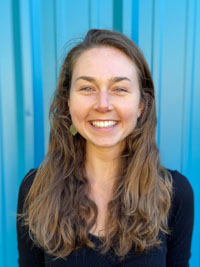
Horizon Award
“Young Visionaries for Health (YV4H), a research project based in Tarboro, N.C., is led by a group of incredibly driven high school student leaders. YV4H equips the student leaders with research and socio-emotional learning skills to lead meaningful change in their community. My role in this project is as a liaison, or the “glue,” between the research team at UNC, community members and student leaders, as well as holistic wellness coaches on our team. This project is made possible through a partnership with the Community Enrichment Organization, mental health specialists, and a UNC research team from the health policy and management department.
During the first two years, the project focused on how built environments (where individuals eat, play, pray, work and learn) and social environments shape a young person’s ability to be physically active. The first year provided students with mapping, leadership and interviewing skills. In the second year, students received training in research ethics and public speaking skills. During year two, YV4H student leaders recruited more than 40 of their peers at Tarboro High to participate in a study, through a mobile health application, in which they were asked questions about physical activity.
In light of COVID-19, YV4H has shifted its focus inward. This school year’s goal is to equip the student leaders with tools to manage stress and stay mentally well during this time of isolation and remote learning, and beyond. This involves helping students identify individuals in their lives who support their aspirations, as well as bringing in holistic wellness coaches and peer support specialists of color who resonate with the students’ lived experiences. Future implications of this work include the project serving as a model for youth engagement public health programs among rural, minority high school students.”
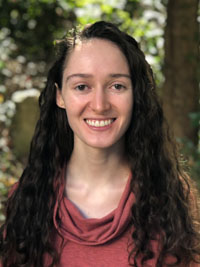
Horizon Award
“Lung cancer causes more deaths than any other type of cancer in North Carolina. If the cancer spreads to the brain, survival typically is only months. Given lung cancer’s association with smoking and North Carolina’s history with tobacco, it is vitally important to develop new treatments for lung cancer by North Carolinians and for North Carolinians.
Patients with lung cancer tumors in the brain are frequently treated with radiation, but high-dose radiation treatment focused on the tumor may miss areas of cancer that have spread throughout the brain. Stem cells have the natural ability to track down cancer cells, and studies have shown that an individual patient’s own skin cells can be reprogrammed into cancer-homing stem cells. The stem cells can also be engineered to produce anti-cancer drugs by introducing a gene that enables the cells to make a protein that is toxic to cancer. These personalized therapeutic skin cells producing anti-cancer drugs can then seek out cancer cells and release their drug in order to eliminate remaining disease after radiation.
We have shown in lab models that these reprogrammed cells can track down multiple spots of lung cancer in the brain, and we can combine these reprogrammed cells with radiation to reduce total tumor size in the whole brain and extend survival. These are exciting first steps in the development of a new, personalized treatment for lung cancer.”

Impact Award
“When the “I’m Smart Too” documentary project began, Chapel Hill-Carrboro City Schools (CHCCS) had garnered national attention for its racial achievement gap. Within the CHCCS, white students are more likely to get proficient scores on end-of-year exams and less likely to face disciplinary actions. By the time students graduate, the data show significant disparities in outcomes and opportunities. Our documentary team, comprised of two former CHCCS educators and UNC students, set out to shed light on the harm that lies at the root of these disparities. That is, to highlight the human aspect of the story that often gets trivialized and forgotten in statistical representation.
I joined the team as a historical consultant with the goal of fully contextualizing the unique history of the CHCCS district, including desegregation and the ways it is inextricably linked to present circumstances. As a result of our extensive interviews with community members and stakeholders, archival research and historical work, our film was able to highlight the nature and extent of the problem. Since the film has been completed, we have continued to uplift the voices of the local community and partnered with local organizations to host film viewings and panels. These viewings have begun to provide a space for community members to come together to find ways to move forward and impact meaningful and long-lasting change within local schools.
The district’s racial achievement gap and systems of gifted programming, through which advantage is often structured, mirror the circumstances of multiple school districts within North Carolina. It is our hope that the community efforts within this school district as a result of the “I’m Smart Too” documentary can inspire statewide improvements and contribute to the betterment of public schooling in North Carolina and beyond.”

Horizon Award
“Heart disease is the number two killer of North Carolinians and there are currently no clinical options that can reverse damage inflicted to the cardiac tissue. Lab-made cardiac patches are a promising approach to heart tissue as they supply diseased tissue with replacement cells and biochemical cues while offering structural and mechanical support. However, major obstacles remain, including the inability of patches to fully integrate with non-diseased tissue, the limits of animal models used to test patches for clinical use, and the absence of inflammatory cells during the testing.
The type of inflammation present can determine the overall tissue repair process, so it is crucial to have tools to predict how a cardiac patch would react and perform in the presence of these cells. As animal models do not accurately represent functioning human cardiac tissue, my research has focused on engineering two- and three-dimensional microphysiological models to test potential cardiac patch components against the inflammatory cell types present in heart disease. These patch components include repair cells such as human stem cell-derived heart cells, collagen-producing cells (fibroblasts) and naturally derived materials that serve as supportive scaffolding.
The results of my research, including collaborations with other N.C. labs, have reported valuable design considerations such as how heart disease-related inflammatory cells respond to selected cardiac patch components and deciphering potential cellular crosstalk between cells of the immune system and replacement cells. These models and considerations provide insight into predicting how future cardiac constructs may be translated to benefit heart disease patients.”
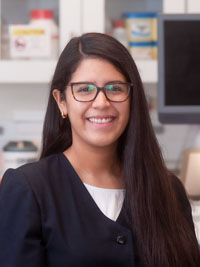
Impact Award
“In North Carolina, stroke is the fifth leading cause of death, and more than 14,000 N.C. residents are disabled by stroke annually. Plaque buildup at greatest risk for causing stroke is difficult to identify. The current clinical standard is to detect narrowing in arteries, but this does not provide information on specific carotid artery plaque components that are associated with rupture risk. Such information is vital to preventing strokes.
To solve this problem, we have proposed the use of advanced Acoustic Radiation Force Impulse (ARFI) ultrasound for characterizing the structure and composition of carotid plaque in humans. Our study has assessed 21 patients with clinical indication for carotid endarterectomy, a surgical procedure to remove plaque, at UNC Hospitals. The outcomes demonstrated that ARFI, a non-invasive procedure, identifies relevant components in human carotid plaque. In particular, we implemented ARFI variance of acceleration measurements to independently identify plaque components associated with rupture potential. Additionally, to further increase performance in identifying plaque components, a machine learning framework was developed using ARFI ultrasound to automatically identify plaque components. This framework removes user dependence and bias, allowing for better accuracy and precision.
Our results support that ARFI ultrasound is more accurate than the clinical ultrasound standard, and its ability to precisely characterize plaque structure offers potential clinical application in patients with atherosclerosis. This technology provides a non-invasive identification of plaque composition toward a better stroke risk assessment.”

Impact Award
“I conduct research on the impacts of pandemics on the population of North Carolina. Understanding how a public health emergency could impact our population before it happens is crucial to our ability to respond when one does happen. The relevance and urgency of my work has become clear in recent months as we move through the COVID-19 pandemic.
My work focuses on what could happen after the people of North Carolina get sick during a pandemic; I have studied both pandemic influenza and COVID-19 and use actual population distribution data from the 2010 census to create realistic and immediately applicable pandemic simulations. I also build models to assess hospital system surge capacity, potential spatial distribution of infections and mortality, vulnerability to mortality, and access to health care services.
Additionally, I work as part of the collaborative modeling team NC COVID-19, made of researchers from UNC-Chapel Hill and N.C. State University, to create live pandemic models and risk maps that show the current risk of being exposed to COVID-19 by ZIP code, school district and more. They are available to the public at nc-covid.org for use in understanding what the COVID-19 pandemic looks like in our state and gauging individual risk of contracting COVID-19. The models and site are updated daily using the latest available data from the N.C. Department of Health and Human Services.
This work has been used by many decision-making groups and individuals across the state and featured by a variety of local media organizations as a tool for keeping the public informed about the ongoing pandemic.”